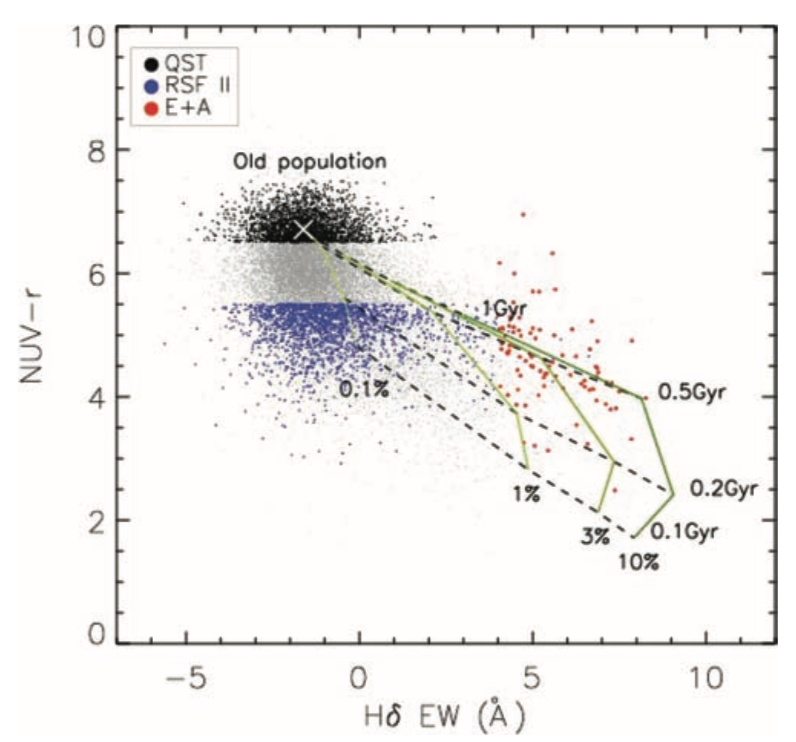Fundamental Plane

Galaxies are believed to evolve from the blue star-forming stages to the quiescent red sequence via the green valley stage. There is an interesting galaxy group (called E+A galaxies) that suddenly stops forming stars after vigorous star formation. E+As are the key populations for understanding the galaxy evolution because they are believed to be in a transition phase from an actively star-forming blue galaxy to a quiescent red galaxy. To understand how E+A galaxies eventually evolve to their last evolutionary stage, we first identify a new sub-class of galaxy using their distinctive near ultraviolet–optical color. GALEX found that a significant fraction of early-type galaxies show UV excess that can not be explained even with the strongest UV upturn expected from evolved old stellar populations.

In Choi et al. (2009), we examined possible connections between these UV-excess galaxies and post-starburst systems (i.e., E+A galaxies) by comparing their position on the Fundamental Plane (FP), which relates galactic effective radius, effective mean surface brightness, and central velocity dispersion in a two-dimensional manifold. Based on systematic differences in position, slope, and scattering of their FPs, we suggested that early-type galaxies with UV excess are likely the most recent arrivals to the red sequence after undergoing minor star formation (i.e., minor version of E+A), rather than passively evolved E+A galaxies.